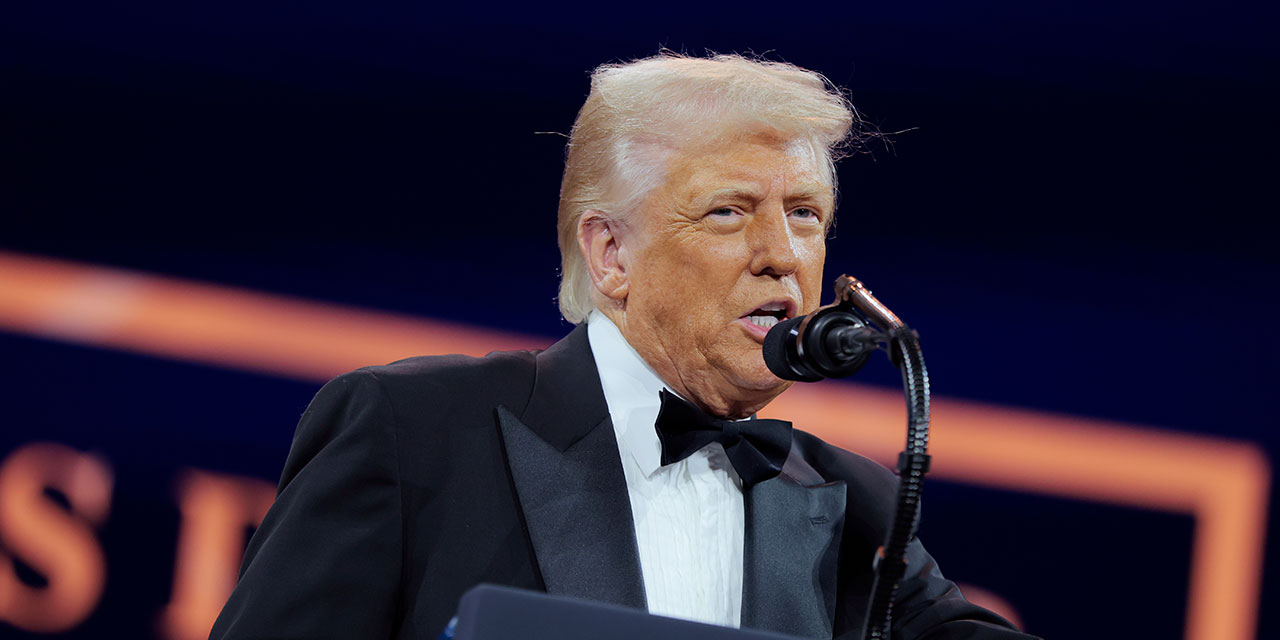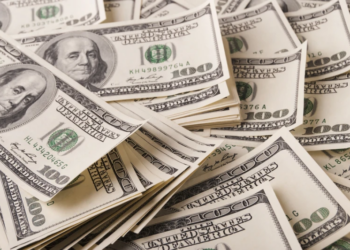
President Trump’s tariffs—some of which he has now paused—were always a risky business. The president and his advisers should beware breaking the imperfect system of global trade; they won’t be able to build their preferred replacement quickly, if at all. They should also have been more wary of the surprises a multi-thousand-point drop in stock indices and attendant bond-market turmoil may reveal—including the major banks or financial firms that can’t withstand a crash of this magnitude.
And yet, it was hard to watch the S&P 500 fall by 9 percent in just two days last week and not wonder: Might we have avoided this moment if Trump’s predecessors had been willing to withstand a more modest economic and market correction in the past?
Finally, a reason to check your email.
Sign up for our free newsletter today.
Past presidents could have taken some economic pain—pain smaller than that which Trump is still contemplating—to correct massive household debt and bubble-fueled malinvestment. Instead, for more than three decades, our leaders preferred to worry about “too big to fail.” That fear of allowing markets to help adjust the economy created the political conditions that gave rise to the current moment, and a far more chaotic attempt at political adjustment.
Much of the reason Trump became president in 2016—and won again in 2024—was American unhappiness and anxiety about the economy. The issue wasn’t just transitory inflation. It was, and remains, a sense that something is wrong with the post–World War II economic system, which has persisted well past what a free market would permit. If you were Jimmy Carter, you might have apocryphally called this mood a malaise.
For eight decades, the American citizen’s primary economic role has been to consume. That model worked when Americans were buying a healthy mix of goods made both at home and abroad—and when they were spending rising incomes earned from stable, well-paying manufacturing jobs.
But in the late 1970s, America began racking up persistent trade deficits. It also began losing manufacturing jobs—by 2010, they were down 41 percent from their 1979 high. Wage growth slowed, particularly for men without college degrees, as housing costs soared.
To keep consuming, Americans had to borrow. In 1987, household debt was $7.3 trillion in today’s dollars; by 2024, it was $19.4 trillion (the population increased by just above 40 percent). Of that debt, Americans owe nearly $1.2 trillion on credit cards, nearly four times the inflation-adjusted $316 billion they owed in 1987.
The only way Americans could shoulder such a debt burden was for the Federal Reserve to bring interest rates ever lower. Those low interest rates were in turn enabled by billions of non-American, low-wage workers entering the global economy, keeping American prices and inflation low.
Markets have tried to help us correct our economic imbalances, most obviously during the 2008 financial crisis—a free-market revolt against unsustainable private-sector debt levels. But at every turn, elected officials and the Federal Reserve have been terrified to tighten the credit valve that kept money flowing. After 2008, for example, the government replaced trillions of dollars in private-sector debt with new trillions of dollars in public-sector debt.
The problem is older than 2008. More than four decades of government-directed economic policy have encouraged reckless household borrowing—including in the housing market—by indirectly subsidizing it with implicit guarantees against investor loss.
As early as the 1980s, the government balked at enduring any corrections. In 1984, the Reagan administration bailed out investors in the nation’s eighth-largest bank, Continental Illinois, partly because they feared a credit crunch. Thus, the term “too big to fail” was born.
Nearly a decade and half later, the Clinton administration continued and expanded this policy of refusing to allow any financial-industry failure. In 1998, Washington regulators leaned on regulated banks to rescue a hedge fund, Long Term Capital Management, which had gone bust through unwise speculation. The regulators feared that the hedge fund’s collapse, under normal procedures, would take down an investment bank or two. The financial industry, though, understood that the too-big-to-fail umbrella now extended to the investment world, helping to usher in an era of speculation in tech and later mortgages.
A month after September 11, 2001, President George W. Bush told Americans to go shopping: he said the terrorists’ intent was to frighten Americans to the point that “people don’t shop.” He wasn’t wrong; it would not have been a good idea to encourage people to hunker down and keep their pocketbooks shut out of dread. But the government went too far. After the attacks, the Federal Reserve slashed interest rates to then-record lows and kept them there for years.
One price of that failure to acknowledge reality was the debt-enabled housing bubble. Homeowners may not have experienced robust wage growth, but they felt rich through their housing values. When that bubble burst in 2008, neither Bush nor his successor, President Obama, made a retreat from an economy over reliant on consumption. Mortgage debt fell, mostly due to defaults, but credit-card debt replaced it. To keep the credit flowing, both presidents bailed out investors in banks and other financial firms. This caused a social and political rupture so traumatic that it helped usher in first the Tea Party and Occupy Wall Street—and then the Trump era.
Policymakers, though, remain spooked by the prospect of short-term pain. The Fed kept rates at or near zero for years, causing global malinvestment, more inequality, and more public resentment. During Covid-19, Congress, under both Trump and Biden, increased the federal debt by trillions of dollars to flood the economy with money—more than making up for households’ lockdown-related job losses—to ensure that the public would keep on spending during the pandemic. If you’re wondering where all those loss-making food-delivery firms and empty glass apartments came from, it was because people and companies with money had insufficient productive uses for it.
Indeed, no president has been willing to ask the American consuming public for sacrifice since 1977, when a sweater-wearing Jimmy Carter asked people to turn down their heat to 55 degrees at night to save energy. Two years later, only Federal Reserve chairman Paul Volcker had the fortitude to exact short-term pain for a longer-term gain by increasing interest rates to reduce inflation—but he wasn’t directly accountable to voters.
Watching Trump, it’s hard not to see the ghosts of decades of missed opportunity. His attempt to straitjacket a global economy over just a few months is far less subtle than what the economy itself could have done on a more gradual basis over the decades, if government hadn’t attempted to thwart market signals. That other world would have had less consumption, more investment, accompanied by government stepping in to correct market distortion—for example, by tariffing China for unfair trade practices—rather than adding to it.
Massive, sudden tariffs on both rivals and allies are not a good idea. Nor was it wise to trigger a market meltdown (though Trump insists that wasn’t his goal). More to the point, he doesn’t seem to grasp that trade deficits are a symptom of the deeper problem: America’s reliance on household debt.
Still, it was admirably radical when Trump acknowledged that his plan to address economic imbalances might cause temporary market and economic pain—and moved forward anyway. Crude as it may be, Trump’s stance paid the public an unusual compliment: he believes people can understand the concept of a tradeoff.
Trump’s critics might say that his stance isn’t a sign of resolve, but a sign of indifference to suffering. But how did two generations of politicians and technocrats so misalign the economy that, to many voters, such indifference seemed the best way forward?
How different today’s economy might have been if Biden, Obama, Bush, or Clinton had treated the American voter as a sophisticated citizen rather than a mindless consumer. What if they had told voters that to avoid a crisis and build a sturdier economy, we needed to ease back from borrowing for consumption? Their failure to do so helped create the political conditions—if not the economic justification—for what Trump is doing now.
One can’t help but wonder if a former president or presidential hopeful was watching Trump stare down the stock market last week and thinking, I didn’t know that was allowed. They all became so afraid of market reactions that they forgot the purpose of markets in the first place: to reveal economic realities, good and bad, so that a democracy can adjust as necessary—not to intimidate the government into bailout after bailout.
Photo by Anna Moneymaker/Getty Images News via Getty Images
Source link
















